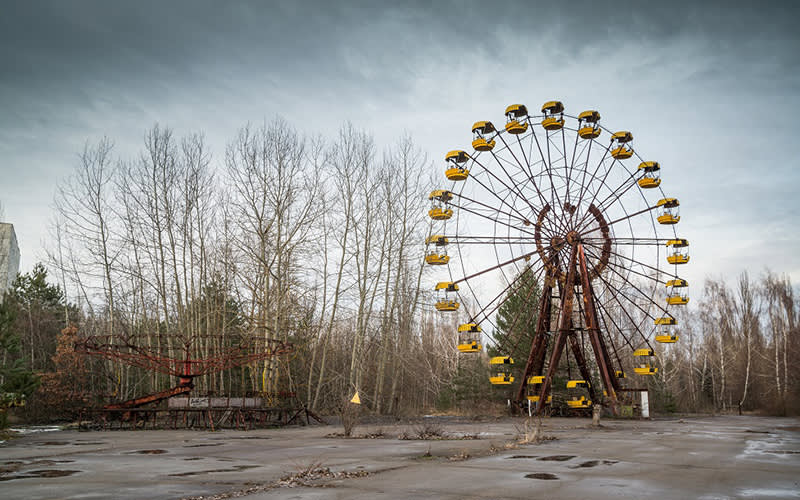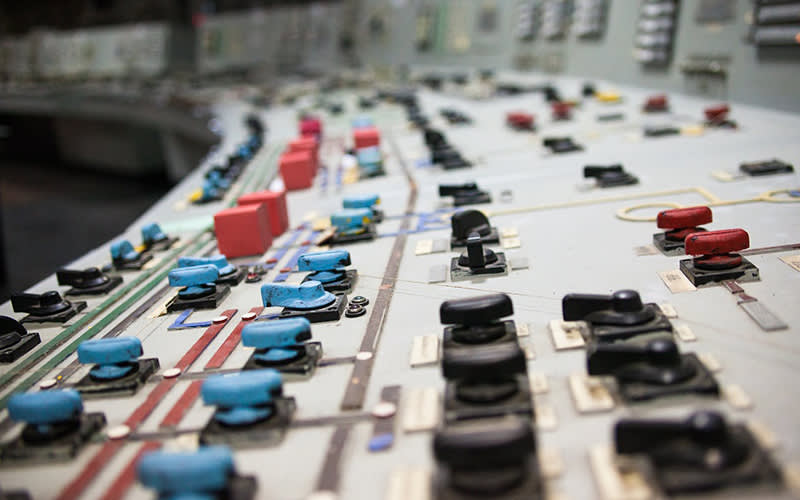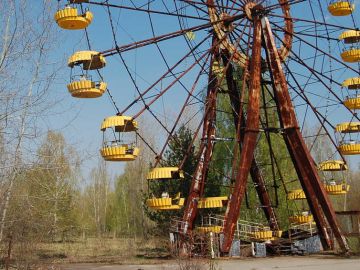Read time – 3 minutes
On April 25 1986, the worst nuclear disaster in human history took place when an accident occurred at Chernobyl’s nuclear reactor No.4 in the Ukraine.
Repercussions were terrible and long-lasting, with nuclear fallout detected across the whole of Europe, resulting in thousands of people being evacuated, leaving a deserted town in the wake.
Taking a trip to Chernobyl is one towards the surreal, but also one that shows the stark reality of what can happen if we’re not careful.
If you’re inquisitive and have a desire to learn and better understand the past, this ghost town is bursting with fascinating stories and gripping artefacts left frozen in time.
 Chernobyl disaster
Chernobyl disaster
Reasons to Visit Chernobyl
By securing a special permit allowing entry to the Chernobyl Nuclear Power Plant, you get the opportunity to visit noteworthy buildings such as the imposing nuclear control room and reactor hall, that helps you to delve deeper into the story of the people from the town of Prepyet and the unfolding events that took place in April 1986.
This weekend, we venture deep into the heart of the Chernobyl Exclusion Zone, where we spend a night in a Soviet-style hotel, after visiting the Kopachi village, where we try to get to grips with the catastrophic consequences that took place.
Visits to sites such as Chernobyl are important to keep the memory alive within our collective consciousness, but they do need to be done sensitively.
Exodus helps travellers who want to visit and learn about the area’s rich history and heritage in a respectful manner. Helping people to travel responsibly and learn about the world – both the good and the bad – is at the core of our company’s DNA.
 Nuclear power plant
Nuclear power plant
The Chernobyl & Kiev Long Weekend offers an opportunity to learn and observe the impacts of this nuclear disaster. Our knowledgeable local guides will explain the chronology of events as well as their long-lasting impact.
We may also get to meet and listen to stories from current employees of the Chernobyl Nuclear Power Plant and share lunch alongside the station workers in the main canteen.
Our itinerary visits an array of key zones linked to the Chernobyl disaster, as well as Kiev’s main heritage sites such as the UNESCO Lavra Monastery. These visits are conducted in a tactful, informative and ethical manner.
Our local partners aim to leave you enriched and with a better understanding of Chernobyl’s history.
Risks to visitors are minimal, and every precaution is taken to ensure a safe visit. Protective clothing as well as shoe covers are provided and are compulsory to wear.
You will also be handed a dosimeter – a device which measures radiation, so that you may measure radiation levels as you explore the surrounding environment.
 Remains from the Chernobyl disaster
Remains from the Chernobyl disaster
Frequently Asked Questions about travelling to Chernobyl:
What should I wear in Chernobyl?
It is compulsory to wear protective clothing (long trousers and long sleeves) and closed-in shoes during your time in the Exclusion Zone. The only exception is when you are in the hotel.
Additional protective clothing will be provided; including an NPP employee gown, shoe covers and a dosimeter to further reduce the risk of contamination.
How does your Chernobyl short break support local communities?
Although no local communities currently live within the Exclusion Zone we visit, as per all of Exodus Travels’ trips, we work with knowledgeable local guides and leaders to run our tour, to give back to the community.
Additionally, we stay and eat in locally owned businesses to ensure that the surrounding communities benefit from the visitors we bring to the area.
Take a look at our trip to Chernobyl below for more details about the tour.




